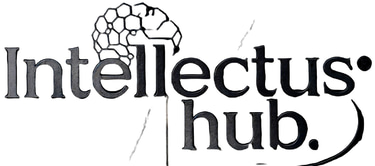Honoring Civilizational Continuity | Uttarakhand’s Cultural Governance Model
Explore how Uttarakhand’s cultural governance initiative preserves India's civilizational heritage through policy, community engagement, and sustainable cultural revival.
INSIGHTS
Gaurav Upadhyay
5/2/20252 min read


In a forward-looking, innovative yet culturally anchored decision, the Government of Uttarakhand has announced recently that Vikram Samvat and the traditional Hindu months as per Hindu Panchang(Chaitra , Vaishakh,Paush , Magh,Falgun) will now be officially mentioned on all government communications, government orders or GOs, including notifications, gazette publications, inauguration plaques, and foundation stones across the state.
This step signifies a conscious acknowledgment of Bharat's civilisational ethos, striving to bridge the rich cultural heritage of Sanatan Dharma with contemporary, innovative governance. By blending these, the state is not only reviving an enduring age-old practice but also fostering a deeper cultural connect for the present and coming generations.
While the Government of India has already included such references in its official gazettes, Uttarakhand’s move denotes a localized and conscious effort to synchronize public policy with cultural continuity. This is indeed a historic and welcome initiative, consolidating the cultural pillar of state identity and governance.
This initiative will ensure that the younger generation remains connected to their cultural roots, cultivating awareness and esteem in our civilisational legacy. As a further step, assimilating such cultural traits into the school curriculum would significantly boost the initiative’s reach and effectiveness. Doing so would not only deepen students' understanding of traditional knowledge systems but also make a substantial contribution to the larger goal of cultural resurgence in a speedily modernizing society.
Such steps reflect a subtle approach to cultural governance, where Vikas(development) and Virasat(heritage) are not seen as opposing forces but as complementary foundations for an all-encompassing identity. By amalgamating these values into both administrative /governance practices and educational content, Uttarakhand sets a precedent for how states can strengthen national consciousness while celebrating cultural ethos.
This balanced and integrated model of development ,deeply rooted in heritage yet open to innovation, is sine qua non for building a culture or tradition-preserving and future-ready Bharat. The effort by the Government of Uttarakhand exemplifies not merely an emblematic expression or a representational move, but a paradigm shift in governance orientation ,where culture is no longer seen as a passive background but an active contributor to the process of public administration and modern policy-making. It showcases a sophisticated perception or elevated sensibility where the historical and future governance perspectives synchronize the timeless spiritual and cultural rhythms and social tempos of our rich civilization.
Embracing the Vikram Samvat and the Hindu Panchang into official documentation of the state government is an affirmation of indigenous historical consciousness,claiming that the modern-day Bharat need not be alienated or isolated from the ancient Indian knowledge systems (IKS) and chronological frameworks that shaped its consciousness over millennia. This subtle yet powerful synchronization introduces a civilizational beat into the mechanisms of modern-day institutions, reasserting the belief that governance rooted in national identity is more likely to be sustainable,enduring, inclusive, and meaningful.
By intertwining or blending cultural symbolism with present-day institutional architecture, the Uttarakhand government is not only crafting a narrative of national pride and cultural continuity but also furnishing a template for decentralized and democratic cultural integration. This is what we can say: a new form of federalism, i.e. "Cultural Federalism", where states become laboratories of heritage-led innovation. Such conscious cultural embedding in the instruments of governance may well lay the foundation for a more spiritually anchored or devotionally grounded and culturally confident society, introducing a benchmark for other states to follow in their quest for balanced, identity-affirming development for a Viksit Uttarakhand and Viksit Bharat.
